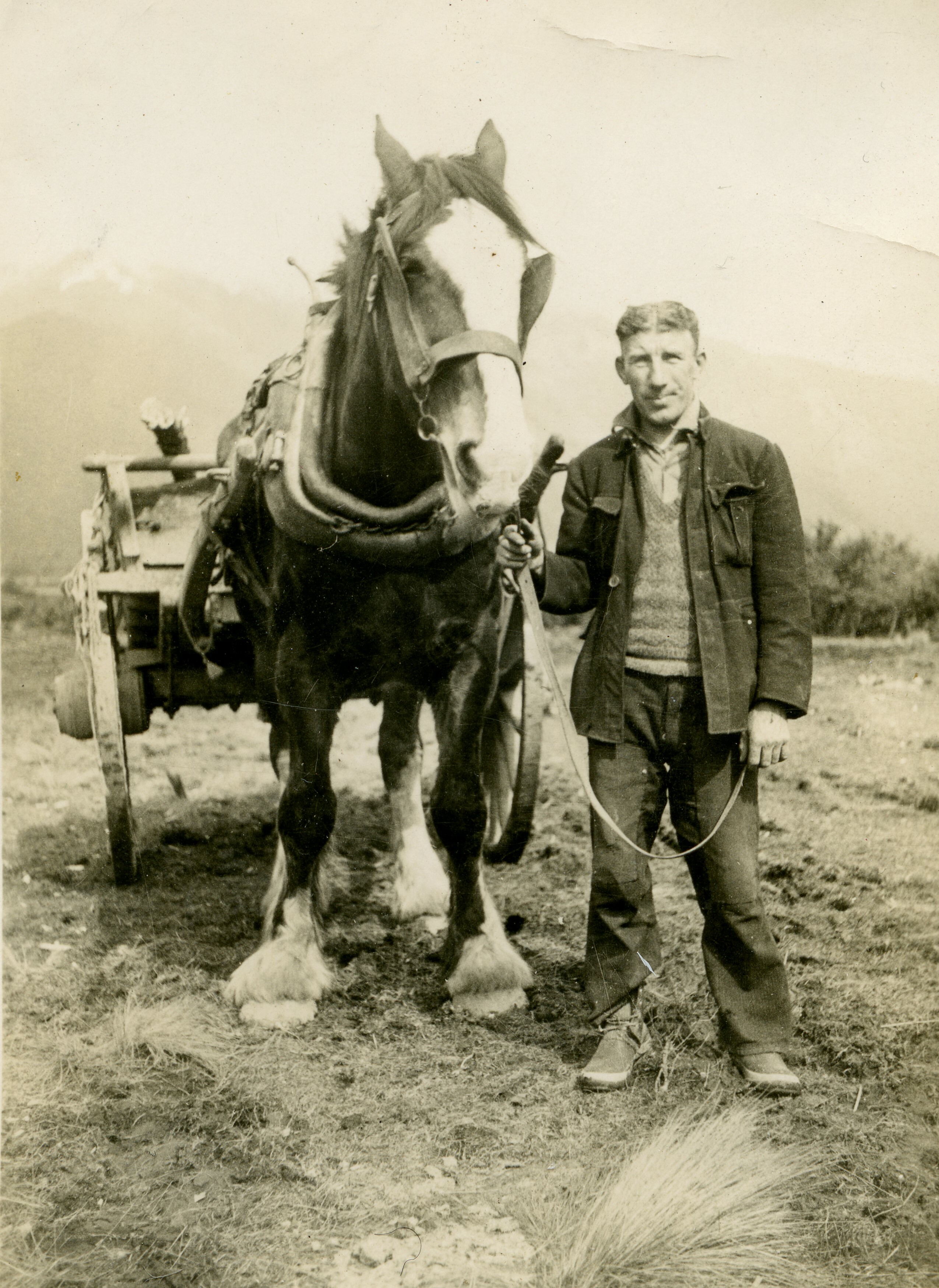A collection of photographs recently donated to the Museum graphically illustrate the difficult living and working conditions that road builders in New Zealand endured prior to 1935.

Roy Murphy, whose grand-daughter donated the photographs, was one of the several hundred men employed during the late 1930s to complete the job of turning what had been a foot track and cattle droving route from North Canterbury to the West Coast into a road. The Canterbury Progress League had been lobbying for another road to link east and west and open up the area for recreation and settlement since the late 1920s.
The start of the Great Depression in 1929 led to Government spending more on public works, particularly road-building, to provide work and offset radically reduced spending by the private sector. Work on the Lewis Pass road started in the early 1930s but progress was frustratingly slow.

Working and living conditions for the men employed on the road were tough. Work was done by hand in dangerous and sometimes very cold conditions. The men worked 6 days a week, lived in tent camps and cooked for themselves, buying food from the closest store, often run by the Public Works Department. Sundays would be spent on domestic tasks such as washing clothes.
In the lead-up to the 1935 General Election £25,000 was voted for the completion of the project. The election resulted in a change of government with the Labour party forming the government for the first time. Bob Semple, previously a union leader, was appointed the Minister of Public Works. Concerned about the uneconomic and demoralising system in use for Public Works, Semple introduced a 40 hour week, increased wages, introduced pay parity for Māori and improved living conditions. This included no longer charging workers rent for tents.

The narrow gravel road between Hanmer and Murchison officially opened in October 1937 with over £200,000 having been spent on it. Since then the road has been continually improved and the two lane sealed highway, now known as State Highway 7, is an important route between Canterbury, the West Coast and Nelson. When State Highway 1 was closed after the Kaikōura earthquakes in November 2016, State Highway 7 was for many months the only route between Nelson and Christchurch.
Roy Murphy returned to Christchurch after the road was finished and married soon afterwards. He died in Christchurch in 1972.






